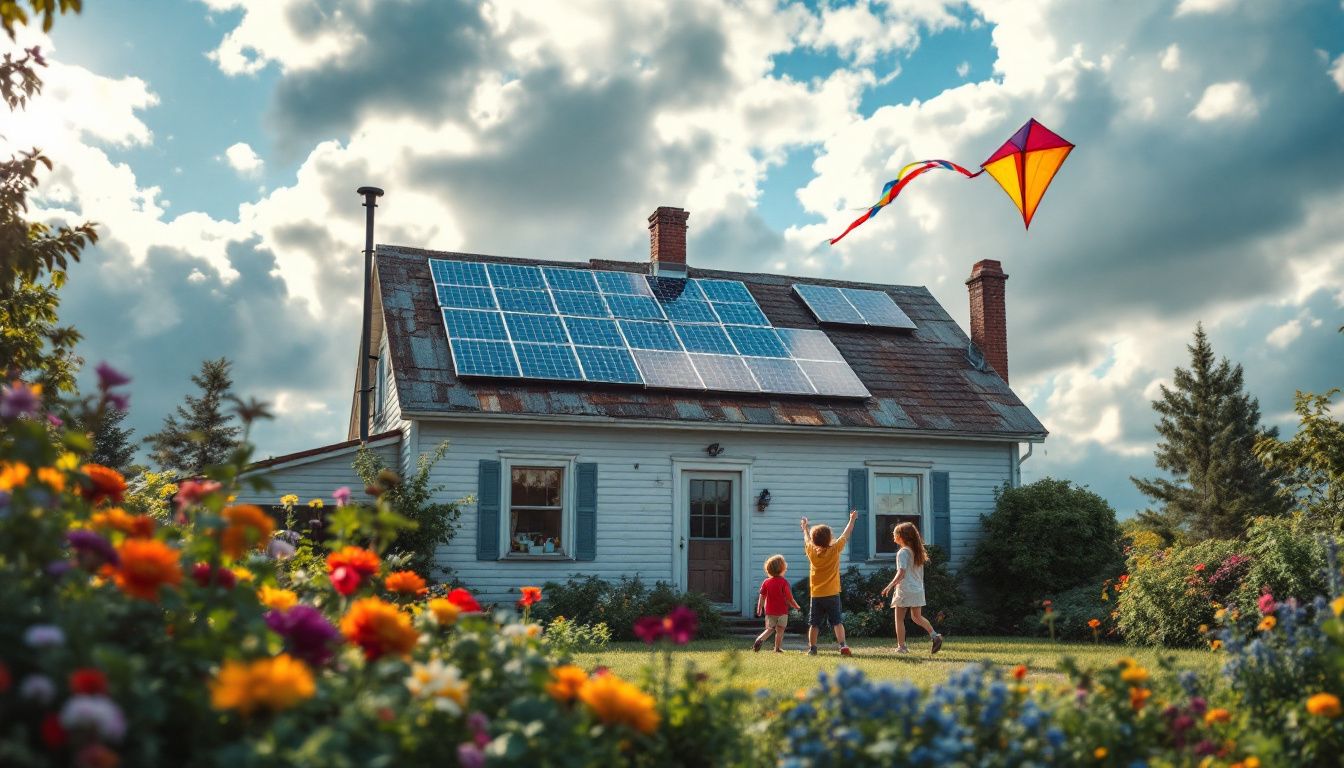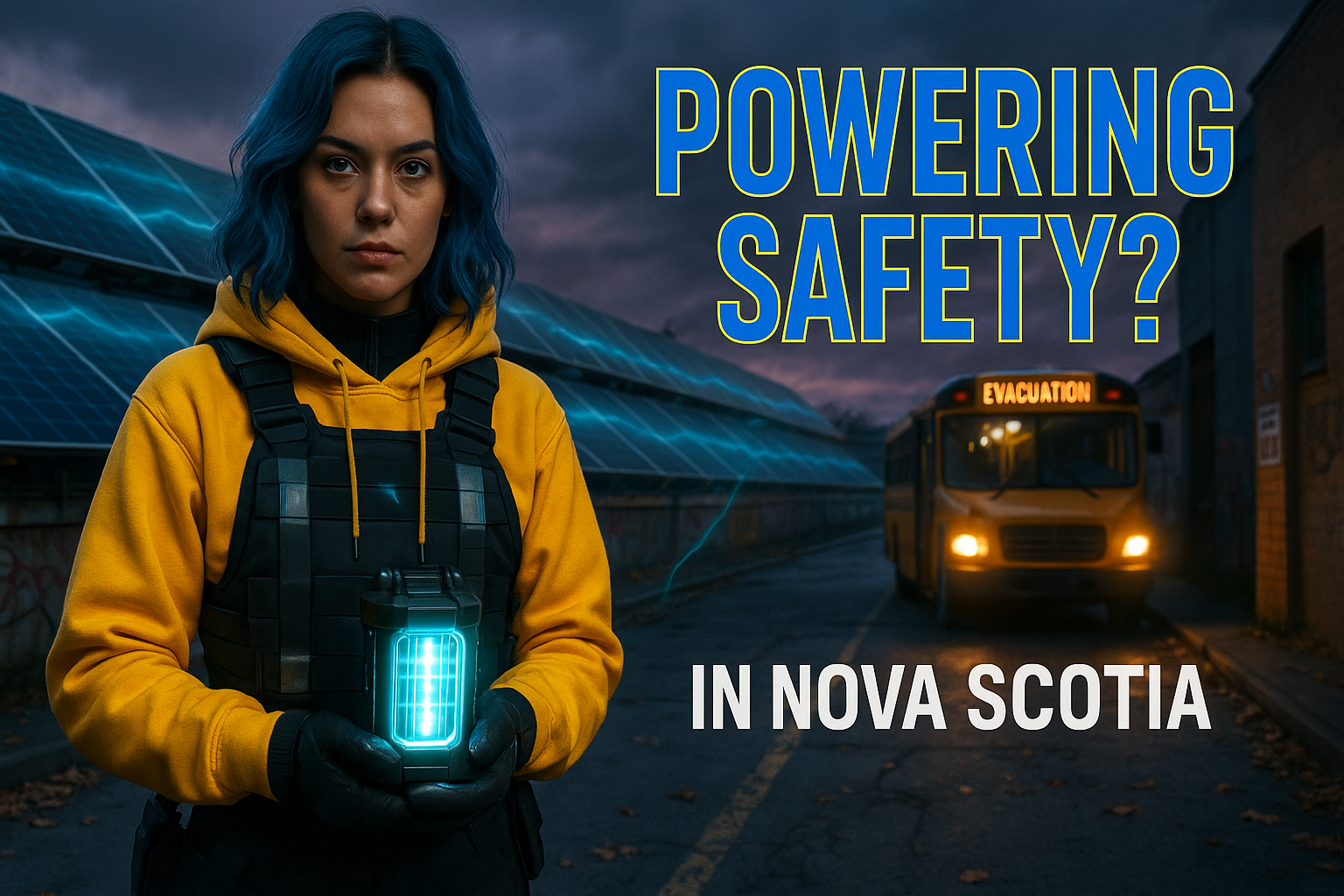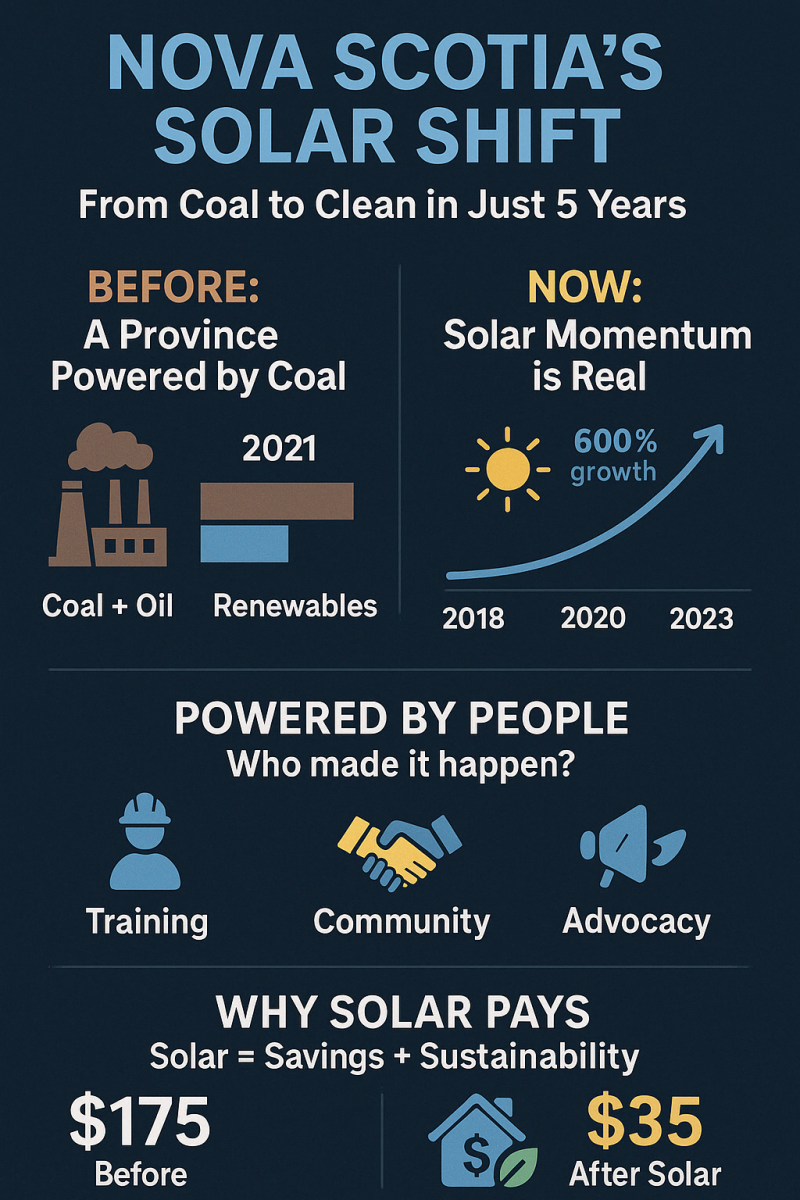
Is Solar Energy Worth It in Nova Scotia in 2025?
April 13, 2025
Nova Scotia Solar in Action: Mosques, Buses, and Local Benefits
April 23, 2025Hey everyone, Vitaliy Lano here from SolarEnergies.ca – you know, where “Canada goes Solar”. With over a decade sorting through home improvement and sustainable options, my goal is simple: make green living understandable and show you what really works. Today, we’re looking closely at Nova Scotia. This province has been on quite a journey with energy, especially solar. Let’s break it down.
The Way Things Were: Nova Scotia’s Coal-Powered Past
To really get where Nova Scotia is heading with solar, you need to understand where it came from. For a very long time, the province ran mostly on fossil fuels, especially coal. Think about it: Nova Scotia Power, the main utility, was built around these resources. Even as recently as 2021, coal made up a huge 47% of their electricity generation. Add another 12% for natural gas and oil, and you see the picture – a system heavily reliant on carbon-intensive fuels.
This wasn’t unusual historically, but Nova Scotia’s reliance was deeper than many other parts of Canada. This history created real challenges for switching to cleaner energy. There were massive investments tied up in coal plants and infrastructure, plus established ways of doing things. Change wasn’t easy.
Early Flirts with Renewables
It wasn’t that Nova Scotia ignored renewables completely back then. There was definite interest in tapping the power of the Bay of Fundy tides – one of the most powerful tidal resources anywhere. People tried, but the tech needed was complex, expensive, and faced tough environmental reviews. So, tidal power never really hit the big time beyond test projects. This shows the province was looking, but practical things like cost and available technology guided the choices. Wind power eventually took off more successfully, and later, solar PV proved more feasible.
Solar Before the Boom (Pre-2010s)
What about solar specifically? Before the 2010s, solar power in Nova Scotia was pretty niche. The main focus was on solar thermal systems – using the sun to heat water, not generate electricity. Solar photovoltaic (PV) panels, the kind that make electricity, were just too expensive for most people or businesses. You’d find them in off-grid setups, for specific industrial needs, or used by real early adopters and hobbyists.
Interestingly, the group now known as Solar Nova Scotia actually started way back in 1980 as the Solar Energy Society of Nova Scotia. This shows there was interest for a long time. But passion alone wasn’t enough. For solar PV to really take off, two big things needed to happen: government policies to make it economically viable (like net metering), and a massive drop in the global price of solar panels. The groundwork was there, but the real growth spurt had to wait for these triggers.

Solar Nova Scotia: Building the Foundation
That group founded in 1980, Solar Nova Scotia (Solar NS), played a huge role. Initially, they focused on educating the public about solar thermal heating. They held workshops and conferences, connecting the few people involved back then. They kept the idea of solar alive when it wasn’t yet a mainstream option.
Shifting Gears to PV
As solar PV technology got better and cheaper globally, Solar NS smartly shifted its focus. They saw the potential for generating electricity and expanded their mission beyond just heating. They realized a whole industry needed support.
A really key move was focusing on the practical side. They knew quality installations were vital for building trust. So, they started developing training programs and working on standards for installers. This helped create a qualified workforce. At the same time, Solar NS became the main voice speaking for the growing solar industry to the government and Nova Scotia Power. They pushed for policies that would help solar grow. This change from just an educational group to a full-fledged industry association, covering training, standards, and advocacy, was crucial.
What Solar NS Does Day-to-Day
Their work covers a lot of ground:
- Public Education: They still run “Solar 101” type sessions and provide online resources to help people understand solar. This builds interest and confidence.
- Industry Training: They offer courses for installers, focusing on technical skills and safety. They also weigh in on installation codes and standards.
- Policy Advocacy: This is huge. They talk regularly with government and the utility, pushing for fair rules, good incentive programs, and especially strong net metering. Their biggest win here was stopping that proposed net metering charge in 2022.
- Networking: They bring people in the industry together – installers, suppliers, developers – through meetings and events to share knowledge and build connections.
This all-around approach helps build a healthy solar market from the ground up.
Making a Real Difference
You can see the impact Solar NS has had. Their membership grew alongside the industry. And that fight over net metering in early 2022? That really showed their muscle. Nova Scotia Power wanted to add a “system access charge” that would have seriously hurt the value of going solar for homeowners. Solar NS led the charge against it, mobilizing public and political support. The result? The government stepped in quickly and told the utility to back off. It proved that an organized industry group could effectively stand up for solar, shaping the rules of the game. Both the government and the utility now recognize Solar NS as a key voice. Their steady work over the years has undoubtedly helped create the positive environment for solar growth we see now.
Where Things Stand Now: Solar’s Big Moment
Nova Scotia’s solar market has continued its expansion beyond the boom leading into 2023, transitioning into a phase shaped by comprehensive provincial policies aimed at broader, structured growth. While establishing precise installed capacity figures for 2023-2024 remains challenging due to data inconsistencies across sources, one industry report indicated 80 MW operational by late 2024 – a figure differing from earlier estimates but part of the path towards the province’s 300+ MW target for 2030.
Residential net metering, the engine of early growth with around 10,000 participants near end-2022, continues to expand thanks to protective policies , available funding , and high electricity rates , with projections suggesting around 22,000 solar homes by 2030. This ongoing momentum is underpinned by sustained demand for clean energy and a robust policy framework under the Clean Power Plan , including the 2024 launch of the Community Solar Program and significantly expanded Commercial Net Metering , diversifying growth beyond homeowners with support from groups like Solar NS.
The Policies Making it Happen
Good rules are essential, and Nova Scotia has put some key ones in place:
- Net Metering: This is the workhorse policy. If you install solar (up to 100 kW system size), you can send extra power you don’t use back to the grid. You get credits on your bill for that power, usually at the same rate you pay for electricity. These credits help cover the cost of power you draw from the grid later, like at night. They square up the credits once a year. This makes the payback on solar much better for homes and small businesses. Keeping this program strong after the 2022 challenge was a major victory for solar supporters.
- ‘Right to Solar’ Idea: Sometimes, things like homeowner association rules can block solar installs. There’s been talk in Nova Scotia about ‘Right to Solar’ laws to prevent unreasonable restrictions, ensuring people have the freedom to install panels. It shows a proactive mindset to remove annoying barriers.
- Incentives: Money talks. Right now, the main financial help comes from the federal government and the interest-free Greener Homes Loan (up to $40,000). Nova Scotia used to have its own popular ‘SolarHomes’ rebate program run by Efficiency Nova Scotia (offering around $0.60 per watt), but that’s finished now. The federal programs are still a big help in lowering the upfront cost.
- Tip for Homeowners: Getting quotes for solar? Make sure the installer discusses the federal grant and loan options with you. It can make a big difference to the final price.
- Community Solar: What if you rent, live in an apartment, or your roof just isn’t good for panels? The Community Solar Program is designed for you. You can subscribe to a share of a larger, local solar project built somewhere else in your community. You then get credits on your electricity bill based on your share’s production. This is about making solar benefits available to more people. The program is still rolling out, so its full impact remains to be seen.
- Big Projects: The province also needs large amounts of clean power fast. They use competitive bids to buy electricity from big wind and solar farms. A recent target was to add 372 MW of new, low-cost wind and solar this way. These large projects are crucial for hitting the big 2030 renewable goals.
Here’s a quick summary of the main programs:
| Policy/Program Name | Key Features/Rules | Administering Body | Primary Impact/Goal |
|---|---|---|---|
| Net Metering Program | Systems up to 100 kW; Grid credits for excess generation; Annual reconciliation | Nova Scotia Power | Enable customer-sited generation; Improve solar economics via bill savings |
| Canada Greener Homes Loan | Federal interest-free loans up to $40,000 for retrofits, including solar PV | NRCan / Financial Partners | Provide accessible financing for residential solar & efficiency projects |
| Community Solar Program | Allows subscription to off-site solar for renters, etc.; Bill credits based on share | Provincial Govt. / NS Power (TBC) | Broaden access to solar benefits; Promote equitable energy transition |
| Large-Scale Procurement (RATE) | Competitive bids for utility-scale wind/solar (e.g., 372 MW recent round) | Provincial Govt. / Nova Scotia Power | Add significant renewable capacity for 2030 targets; Secure low-cost energy |
| ‘Right to Solar’ (Concept) | Aims to prevent unreasonable restrictions (HOAs, etc.) (Status: Proposed/Considered) | Provincial Government (Legislative) | Remove non-financial barriers; Ensure homeowner right to install solar |
| SolarHomes Program (Concluded) | Past provincial rebate ($0.60/watt up to $6k) | Efficiency Nova Scotia / EfficiencyOne | Previously reduced upfront cost (Replaced by Federal programs) |
Export to Sheets
The Growing Industry
All this activity means more local jobs and businesses. The number of solar companies in Nova Scotia – installers, suppliers, consultants – has grown significantly, reflected in Solar NS’s membership. Adding 76 MW in one year takes a lot of skilled people for sales, design, installation, and upkeep. Building this local capacity, helped by Solar NS training, is vital for keeping the momentum going.
Don’t Forget Efficiency: The Role of Efficiency Nova Scotia
There’s another key player: Efficiency Nova Scotia, run by EfficiencyOne. They are unique – Canada’s first energy efficiency utility. Their whole job, mandated by the province, is to help everyone (homes, businesses, industry) use less energy. They’re funded by a small charge on electricity bills.
Their focus isn’t directly on building solar panels, but their work is super helpful for the solar transition. They used to run the SolarHomes rebate program, directly helping people afford solar. Even though that program is done, their home energy assessments often recommend solar alongside things like insulation.
Think of it this way: Solar Nova Scotia works on boosting the supply of clean energy (more solar!). Efficiency Nova Scotia works on reducing the demand for energy overall. Less demand makes it easier and cheaper to hit those big renewable energy targets. It also takes stress off the grid, making it easier to handle variable sources like solar. Having these two strong, separate organizations – one for solar supply, one for energy demand reduction – is a real strength for Nova Scotia. They work together, indirectly, to speed up the shift to clean energy.
What’s Next? Nova Scotia’s Solar Future
Nova Scotia isn’t messing around with its climate goals. The big ones, set in law by the Environmental Goals and Climate Change Reduction Act (EGCCRA), are: get rid of coal power completely by 2030, and get 80% of electricity from renewables by that same year. That’s a massive change from being almost half coal just a few years ago. On top of that, the federal government wants Canada’s entire grid to be net-zero by 2035.
Meeting the Targets
Hitting these goals means adding clean energy sources like solar and wind at an incredible pace. The recent big purchase of 372 MW of wind and solar, plus the boom in rooftop solar, are good starts. But there’s still a big gap to close by 2030. Solar energy absolutely has to be a huge part of the solution.
Here’s a look at the targets:
| Target/Goal | Target Year | Mandating Legislation/Policy | Current Status (Approx.) | Key Technologies Involved | Major Challenges/Next Steps |
|---|---|---|---|---|---|
| Coal Phase-out | 2030 | EGCCRA / Federal Regs | Ongoing (47% coal in 2021 mix) | Wind, Solar, Hydro Imports, Storage | Replacing baseload; Grid stability; Affordability; Transmission upgrades |
| 80% Renewable Electricity | 2030 | EGCCRA | Progressing (Significant gap from 2021) | Wind, Solar, Hydro, Storage, Efficiency | Pace of deployment; Grid integration; Storage; Policy certainty; Supply chain/Workforce |
| Net-Zero Grid Goal | 2035 | Federal Mandate | Long-term; Requires near-total decarbonization | Wind, Solar, Storage, maybe SMRs | Long-duration storage tech; Grid modernization; Electrification impacts; Cost |
Why Batteries are Becoming Essential
You can’t have reliable power from just solar panels because the sun doesn’t shine all the time. This is where battery storage becomes crucial. Batteries let you store extra solar power made during the day and use it later when needed – at night, on cloudy days, or during peak demand times.
For homeowners with solar, batteries offer backup power if the grid goes down – a big plus with Nova Scotia weather. They might also let you save more money if electricity prices change based on the time of day. For the grid itself, big batteries can smooth out solar production, help keep the system stable, reduce the need for expensive wire upgrades, and just make everything run more reliably. Nova Scotia Power is looking into battery solutions and potential future programs for customers with batteries. Effectively using storage is becoming key to managing a grid with lots of renewables. We need good rules and maybe incentives for batteries to make this work well.
Continued Industry Growth Expected
With strong goals and solar often being the cheapest option, the industry expects to keep growing. The 2030 targets basically guarantee a need for more solar and wind. Policies like net metering and community solar help, federal money is available, and people generally support clean energy. This should mean more jobs in installation, sales, maybe even some manufacturing, and more investment coming into the province.
But, There Are Hurdles…
It’s not all easy. There are real challenges to manage:
- Grid Integration: The old grid wasn’t designed for power flowing back from thousands of homes and huge solar farms. Upgrading lines, managing voltage, and keeping everything stable costs money and requires smart technology. Storage helps, but it’s a big job.
- Policy Stability: Rules can change. The net metering scare showed that policies need to stay predictable for people and companies to invest confidently. Getting to 2030 might need even newer policies for things like storage or how solar power is valued.
- Supply Chain & Workers: Can we get enough panels, inverters, and batteries? And crucially, are there enough trained people to install and maintain everything?. Training programs need to keep pace with demand.
- Finding Space: Big solar farms need land. Balancing this with farming, nature, and what local communities want can be tricky. We need clear, efficient ways to approve good projects.
- Utility Changes: Lots of small solar generators change the game for Nova Scotia Power. They need to adapt their business and operations to work smoothly with all this distributed energy, while still keeping the lights on reliably and affordably for everyone.
Tackling these issues head-on is vital for Nova Scotia to hit its targets.
How Nova Scotia Stacks Up
Looking across Canada, Nova Scotia’s solar approach has some common ground but also unique features.
- Policies: Their net metering is similar to other provinces, but the strong defence of it was notable. The Community Solar program puts them among the leaders trying to widen access. Relying mainly on federal incentives now is different from provinces with ongoing provincial rebates. That 80% by 2030 goal is very ambitious compared to many, especially given the starting point.
- Industry Body: Solar Nova Scotia seems quite effective for a provincial group, with its long history and policy wins. Having both Solar NS (for supply) and EfficiencyOne (for demand) might be a particularly strong setup.
- Market: Leader in Atlantic Canada, yes. Nationally, still smaller in total MW than Ontario or Alberta, but that’s expected given size differences. The key thing is the rapid rate of change away from coal, making it a case study for fast transitions.
The Big Picture: Synthesis and Conclusion
So, what’s the takeaway? Nova Scotia is making a serious, policy-driven shift from coal to renewables, and solar is absolutely central to that. They started behind, heavily reliant on fossil fuels. But strong targets, key organizations like Solar Nova Scotia and EfficiencyOne, supportive policies like net metering, and falling costs have fueled rapid growth. Public support seems solid too.
The province has shown it can lead regionally. The momentum is there. Key strengths include those clear 2030 goals and the effective industry/efficiency organizations [cite: 216-219, 478-481]. Big opportunities lie in expanding community solar and really cracking the code on integrating battery storage.
But reaching 80% renewables by 2030 and net-zero by 2035 is still a huge undertaking. The sheer pace required is a challenge. Integrating it all onto the grid affordably, keeping policies stable, ensuring enough equipment and workers, and helping the utility adapt are the major hurdles. Success hinges on managing these risks and continuing the collaboration between government, industry, the utility, and the public.
Nova Scotia’s solar journey is definitely one to watch. They’re tackling a tough transition head-on. If they can navigate the challenges, they’ll provide a powerful example for others moving away from coal.








